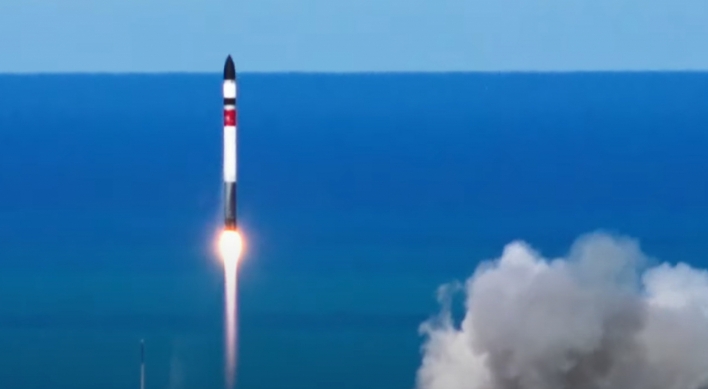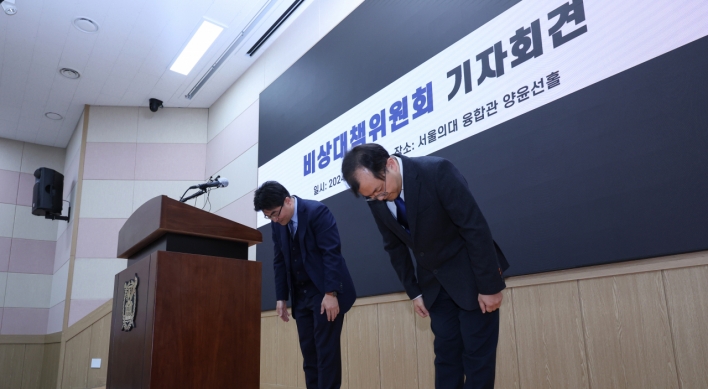ASEAN and its three regional partners ― Japan, China and South Korea ― have decided to launch a surveillance mechanism in May in the light of their $120 billion currency-swap facility that was established in 2009, to ensure sufficient U.S. dollar liquidity in the event of a financial crisis caused by sudden, massive capital outflows.
The basic idea of the ASEAN+3 Macroeconomic and Research Offices (AMRO) seems to be for Asia to effectively look after itself with its own reserves under its own surveillance system, instead of depending on the International Monetary Fund.
The $120 billion swap facility itself is based on the Chiang Mai Initiative, which was taken in 2000 after the 1997-98 Asian financial crisis. But in contrast to the initial initiative’s bilateral format, the new pact is a multilateral agreement called the Chiang Mai Initiative Multilateralization.
The fund will offer emergency balance of payments support to any country hit with extreme currency devaluation and capital flight, such as that which ignited the Asian financial crisis in 1997-98.
For the 10 ASEAN member countries ― Brunei, Cambodia, Indonesia, Laos, Malaysia, Burma, the Philippines, Singapore, Thailand and Viet Nam ― AMRO, which will be headquartered in Singapore and chaired by Japan and China, reflects a dramatic change in their way of thinking regarding interference into domestic affairs.
Their agreement on AMRO means their willingness to accept external intervention into their macroeconomic and monetary management because AMRO will supervise financial management in the region and provide early warnings in case a member country needs support. Such surveillance is needed to prevent moral hazards with regard to the use of the Asian reserve fund.
Put another way, AMRO will replace the surveillance role of IMF, which in 1998 came under strong criticism for its mistakes in coping with the Asian financial crisis.
Emerging economies in Asia have been receiving a torrent of capital inflows from rich countries such as the U.S. and Europe where sovereign debt woes seem to have worsened. However, this short term capital imposes risks of instability as the hot money could derail growth by sending currencies soaring, squeezing exporters and injecting volatility into local markets in case of a sudden reverse flow.
Indonesia’s central bank has issued a set of monetary measures to prevent disorderly capital flight in case of a panic on the domestic or international market. Bank Indonesia also has steadily increased its international foreign exchange reserves to more than $104 billion as of this month. But past experiences show those are not enough. After the 1997-98 crisis, the region learned it needed additional resources to independently weather any kind of economic storm.
Hence the role of the $120 billion Asian reserve fund is to provide emergency dollars to AMRO members that need such liquidity. We see the role of the Asian reserve fund and AMRO surveillance system as the second line of defense for the currencies of its member countries.
In the long run, though, the first-line of defense of the national currency against wild volatility caused by speculative attacks remains in prudent macroeconomic management, which is highly capable of bolstering exports and attracting high inflow of foreign direct investment.
(Editorial, The Jakarta Post)
(Asia News Network)
The basic idea of the ASEAN+3 Macroeconomic and Research Offices (AMRO) seems to be for Asia to effectively look after itself with its own reserves under its own surveillance system, instead of depending on the International Monetary Fund.
The $120 billion swap facility itself is based on the Chiang Mai Initiative, which was taken in 2000 after the 1997-98 Asian financial crisis. But in contrast to the initial initiative’s bilateral format, the new pact is a multilateral agreement called the Chiang Mai Initiative Multilateralization.
The fund will offer emergency balance of payments support to any country hit with extreme currency devaluation and capital flight, such as that which ignited the Asian financial crisis in 1997-98.
For the 10 ASEAN member countries ― Brunei, Cambodia, Indonesia, Laos, Malaysia, Burma, the Philippines, Singapore, Thailand and Viet Nam ― AMRO, which will be headquartered in Singapore and chaired by Japan and China, reflects a dramatic change in their way of thinking regarding interference into domestic affairs.
Their agreement on AMRO means their willingness to accept external intervention into their macroeconomic and monetary management because AMRO will supervise financial management in the region and provide early warnings in case a member country needs support. Such surveillance is needed to prevent moral hazards with regard to the use of the Asian reserve fund.
Put another way, AMRO will replace the surveillance role of IMF, which in 1998 came under strong criticism for its mistakes in coping with the Asian financial crisis.
Emerging economies in Asia have been receiving a torrent of capital inflows from rich countries such as the U.S. and Europe where sovereign debt woes seem to have worsened. However, this short term capital imposes risks of instability as the hot money could derail growth by sending currencies soaring, squeezing exporters and injecting volatility into local markets in case of a sudden reverse flow.
Indonesia’s central bank has issued a set of monetary measures to prevent disorderly capital flight in case of a panic on the domestic or international market. Bank Indonesia also has steadily increased its international foreign exchange reserves to more than $104 billion as of this month. But past experiences show those are not enough. After the 1997-98 crisis, the region learned it needed additional resources to independently weather any kind of economic storm.
Hence the role of the $120 billion Asian reserve fund is to provide emergency dollars to AMRO members that need such liquidity. We see the role of the Asian reserve fund and AMRO surveillance system as the second line of defense for the currencies of its member countries.
In the long run, though, the first-line of defense of the national currency against wild volatility caused by speculative attacks remains in prudent macroeconomic management, which is highly capable of bolstering exports and attracting high inflow of foreign direct investment.
(Editorial, The Jakarta Post)
(Asia News Network)



![[Exclusive] Korean military set to ban iPhones over 'security' concerns](http://res.heraldm.com/phpwas/restmb_idxmake.php?idx=644&simg=/content/image/2024/04/23/20240423050599_0.jpg&u=20240423183955)
![[AtoZ into Korean mind] Humor in Korea: Navigating the line between what's funny and not](http://res.heraldm.com/phpwas/restmb_idxmake.php?idx=644&simg=/content/image/2024/04/22/20240422050642_0.jpg&u=)

![[Graphic News] 77% of young Koreans still financially dependent](http://res.heraldm.com/phpwas/restmb_idxmake.php?idx=644&simg=/content/image/2024/04/22/20240422050762_0.gif&u=)




![[Pressure points] Leggings in public: Fashion statement or social faux pas?](http://res.heraldm.com/phpwas/restmb_idxmake.php?idx=644&simg=/content/image/2024/04/23/20240423050669_0.jpg&u=)







![[Today’s K-pop] Ateez confirms US tour details](http://res.heraldm.com/phpwas/restmb_idxmake.php?idx=642&simg=/content/image/2024/04/23/20240423050700_0.jpg&u=)